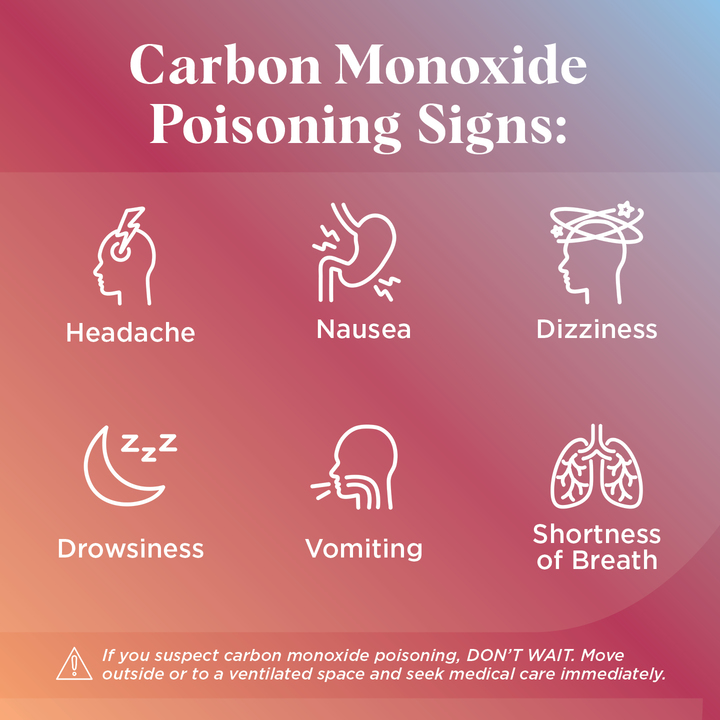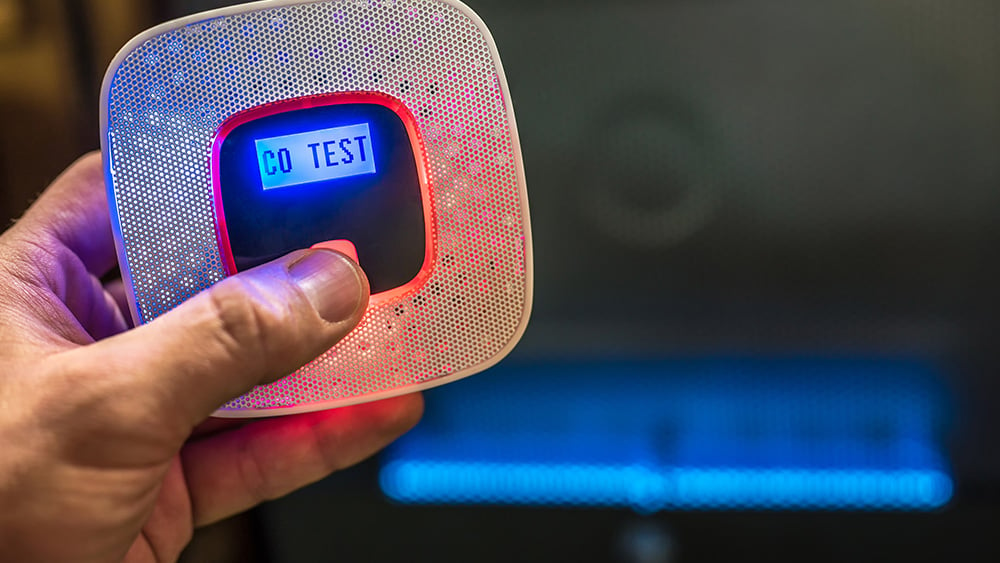Key takeaways:
- Carbon monoxide (CO) is an odorless and colorless gas that can cause sudden sickness and death if inhaled.
- CO poisoning symptoms are similar to flu symptoms: headache, nausea, dizziness, drowsiness, vomiting, and shortness of breath.
- Call 911 or visit a hospital immediately if you think you or someone else has CO poisoning.
If you or someone you know has been exposed to carbon monoxide, call 911 or get them to the closest hospital as soon as possible.
Emergency medicine providers typically see an increase in patients presenting with carbon monoxide poisoning during the winter months. They are hopeful that with increased awareness, they will see fewer of these patients in 2025.
Adults, children, and pets who are inside a home or establishment with a carbon monoxide (CO) leak are at risk of being poisoned. More than 100,000 people in the U.S. visit an emergency department each year due to unintentional CO poisoning, according to the CDC.
How to recognize signs of carbon monoxide poisoning
CO is a gas found in fumes emitted by burning fuel. This includes cars or trucks, stoves, gas ranges, grills, fireplaces, propane heaters, furnaces, along with other appliances or small engines. If CO fumes build up in a house or other building where there are people or animals, it will start to affect them.
Learning to identify CO poisoning symptoms is difficult because the symptoms are similar to other common illnesses.
Symptoms include:
- headache
- nausea
- dizziness
- drowsiness
- vomiting
- shortness of breath
“These patients can be difficult to identify because the symptoms of carbon monoxide poisoning are often non-specific, share overlap with flu-symptoms, and occur during traditional flu season,” said Justin MacKinnon, MD, Emergency Services Medical Director for Rochester Regional Health’s St. Lawrence Region.

Treatment for carbon monoxide poisoning
CO poisoning can be especially dangerous for people who are asleep, drugged, or drunk. Before anyone realizes there's even a problem, the poisoning can cause brain damage or death.
If someone suspects CO poisoning and arrives in an emergency room, providers are advised to give patients 100% oxygen until symptoms resolve, which is usually within 4-5 hours, per CDC recommendations.
For patients with very high CO toxin levels, or heart or neurological problems, providers might use hyperbaric oxygen (HBO) therapy.
Even after a patient regains consciousness and is taken off of oxygen, they will be given neurologic exams to ensure they are recovering fully and there is no brain damage from CO poisoning.
Recovering from carbon monoxide poisoning
While it is possible for someone to recover from CO poisoning, the outcome depends on the amount of time and length of exposure for each person.
The onset of nervous system and brain-related symptoms can occur after recovery from CO poisoning, and the risk is higher in people who lost consciousness or are elderly.
Lingering post-CO poisoning symptoms may include:
- memory loss
- personality changes
- movement problems
Preventing carbon monoxide poisoning
Since CO poisoning carries serious health risks, taking proper precautions is very important. There are several things that can help prevent CO poisoning.
Install CO alarms: The U.S. Consumer Product Safety Commission recommends that every home have at least one CO alarm.
Avoid using portable gas items indoors: Charcoal grills, portable flameless chemical heaters, camp stoves, generators and other similar items should only be used outdoors.
Clean chimney regularly: If your chimney is blocked by any type of debris, CO fumes can back up inside the house quickly. Schedule a cleaning regularly to avoid this issue.
Service appliances regularly: Homes and businesses that utilize gas, oil, propane, wood, or coal burning appliances that are not regularly serviced properly could be at risk for a CO leak. Along with furnaces, this also includes fireplaces, grills, and other appliances operated by CO-emitting fuels.
“It is important to ensure heaters and appliances are properly maintained and vented. Carbon monoxide poisoning will affect anyone, including pets, who are exposed in an affected space, and they need to get out into fresh air and seek medical care immediately,” Dr. MacKinnon said.



